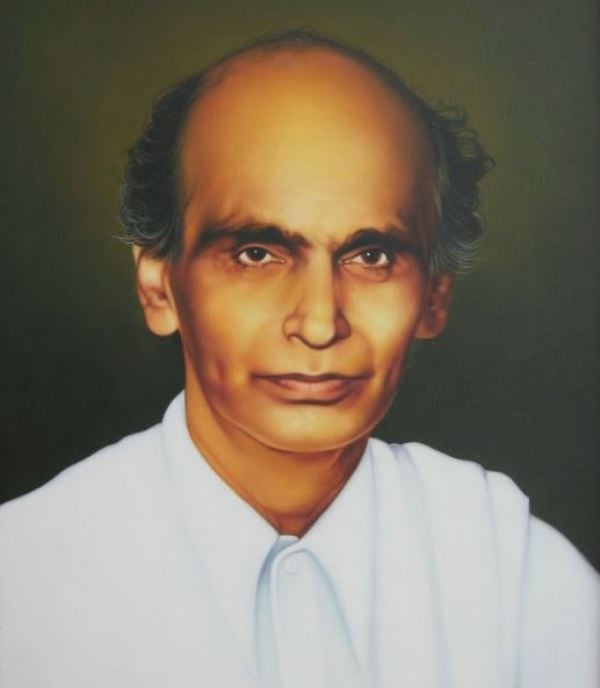PERSONAL INFORMATION
Full name: Gopalaswamy Doraiswamy Naidu [1] The Times of India
Profession(s): • Engineer • Inventor • Businessman
Names Earned: • Adhisaya Manidhar (Miracle Man) • Edison of India [2] Andhra Cultural Portal
Date of Birth: 23 March 1893 (Thursday)
Birthplace: Kalangal village, Coimbatore District, Madras Presidency, British India (now Tamil Nadu, India)
Age (at the time of death): 80 Years
Zodiac sign: Aries
Nationality: Indian
Hometown: Coimbatore
Food Habit: Vegetarian [4] YouTube – Films Division
Age: 80 Years
Check Out Other Celebrities Biography
- khan sir biography
- bibi rajni biography
- shantanu s moghe wife biography
- sharwanand biography
- tokhan sahu biography
EDUCATION
College/University: Did not attend
Educational Qualification: Studied till 3rd standard
PHYSICAL STATISTICS
Height (approx.): in centimeters – 175 cm in meters – 1.75 m in feet & inches – 5’ 9”
Eye Colour: Black
Hair Colour: Salt & Pepper (Semi-bald)
FAMILY & RELATIONSHIPS
Marital Status (at the time of death): Married
Wife/Spouse: Ranganayakiammal
Children: Son – G.D. Gopal Daughter – None
Grandchildren: Grandson – G.D. Rajkumar (businessman) Granddaughter – Shantini (Owner of The Grand Regent Hotel, Coimbatore)
Parents: Father – Gopalsamy (farmer) Mother – Name Not Known
Wife: Ranganayakiammal
MONEY FACTOR
Car Collection: He owned several cars with unique mechanical features. [5] GeDee Car Museum
OTHER INFORMATION
Date of Death: 4 January 1974
Place of Death: Tamil Nadu
Death Cause: Age-related ailments [3] YouTube – Films Division
Hobbies: Photography
INTERESTING BACKGROUND INFORMATION
G. D. Naidu emerged as a remarkable figure in India’s technological landscape, recognized not only as an inventor but also as a visionary businessman. Born into a family of farmers in Kalangal village, Coimbatore, Tamil Nadu, Naidu’s journey began under unassuming circumstances. His academic journey was cut short when he dropped out of school at the tender age of eight, often reprimanded for his frequent absences. This early departure from formal education did not deter him; instead, it propelled him into the workforce, where he initially found employment at a ginning mill near Sulur, Tamil Nadu. It was here that his fascination with machines ignited, particularly when he encountered a 1912 model Rudge motorcycle owned by a British revenue officer. This encounter at the age of 16 marked the beginning of Naidu’s lifelong passion for automobiles and engineering.
Transitioning from his early jobs, Naidu worked as a waiter in a Coimbatore hotel, saving diligently until he could purchase his first motorcycle. Driven by curiosity and ingenuity, he dismantled and reassembled the bike, quickly establishing himself as a skilled mechanic. By 1920, he took a bold step into the transport business by purchasing an automobile coach to ferry passengers between Pollachi and Palani. This venture laid the groundwork for his company, Universal Motor Service (UMS), which would go on to become one of India’s premier transport companies, boasting a fleet of around 300 buses by 1933. UMS also established the first bus junction in India, solidifying Naidu’s reputation as “the wealth creator of Coimbatore.” His entrepreneurial spirit was further highlighted by his ownership of the only Rolls-Royce in India at the time, a gift that underscored his success.
Naidu’s inventive prowess was as diverse as it was prolific; he created over 90 devices that ranged from cutting-edge technology to everyday conveniences, including super-thin shaving blades and a tamper. Among his notable innovations were the ball pen and its refills, along with carbon paper. His passion for photography also flourished, capturing images of significant historical figures such as Mahatma Gandhi and Adolf Hitler. Notably, he ventured to London in 1935 to document King George V’s funeral, showcasing his dedication to both invention and artistry. Despite his many successes, Naidu faced challenges, including a failed bid for a legislative position in the 1936 provincial general elections. Nevertheless, he continued to innovate, developing India’s first indigenous motor and introducing transformative agricultural practices on his 40-acre farm in Podhanur, where he cultivated new crop varieties and hosted esteemed scientists like C. V. Raman.
In the latter part of his life, Naidu shifted his focus towards philanthropy and education. He founded Arthur Hope Polytechnic and Arthur Hope College of Engineering in Coimbatore, serving as principal of both institutions. His commitment to societal betterment led him to establish the Industrial Labour Welfare Association in 1946, aimed at providing hands-on training for aspiring engineers. His innovative spirit remained undiminished; he is remembered for the Rasant razor, one of the world’s first electric razors, which won accolades at the Leipzig Fair. The legacy of G. D. Naidu is celebrated today through various tributes, including the G. D. Naidu Science Museum established in 1967, and the Gedee Car Museum that showcases his extensive car collection, a testament to his lifelong enthusiasm for automobiles. His life continues to inspire future generations, as evidenced by the recent announcement of an upcoming biopic featuring actor R. Madhavan in the lead role, ensuring that Naidu’s remarkable story will resonate with audiences for years to come.
—
Note: All biographical information compiled from publicly available sources.
